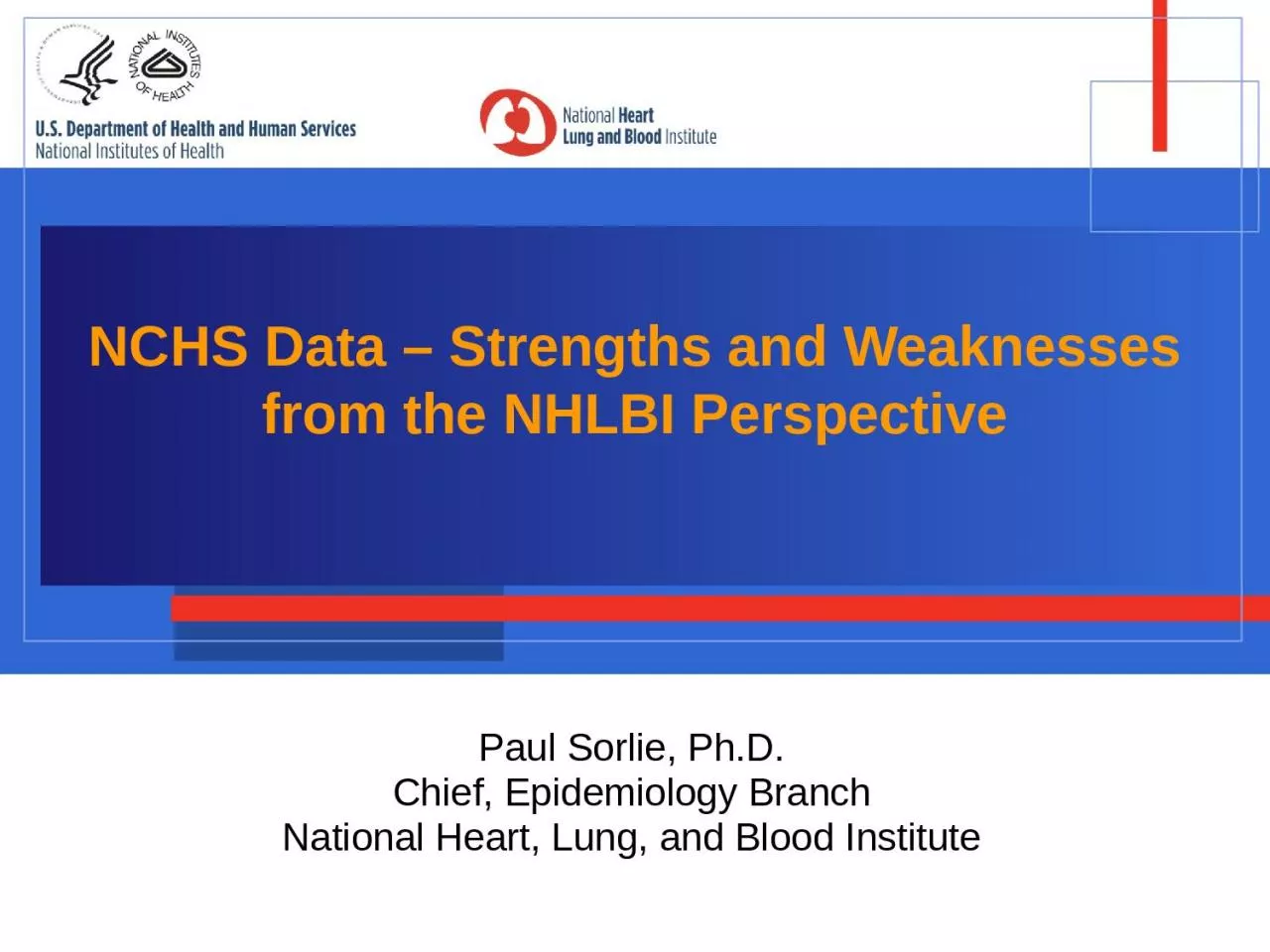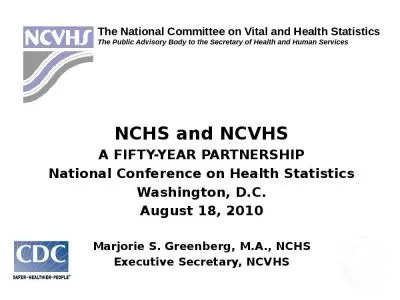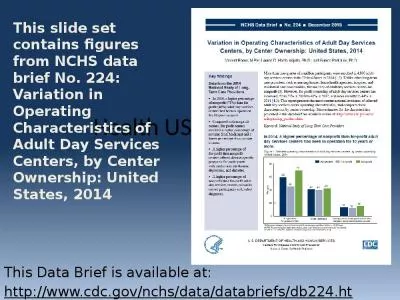PPT-NCHS Data – Strengths and Weaknesses
Author : SupremeGoddess | Published Date : 2022-07-28
from the NHLBI Perspective Paul Sorlie PhD Chief Epidemiology Branch National Heart Lung and Blood Institute NHLBI Strategic Plan Why does NHLBI need NCHS data Surveillance
Presentation Embed Code
Download Presentation
Download Presentation The PPT/PDF document "NCHS Data – Strengths and Weaknesses" is the property of its rightful owner. Permission is granted to download and print the materials on this website for personal, non-commercial use only, and to display it on your personal computer provided you do not modify the materials and that you retain all copyright notices contained in the materials. By downloading content from our website, you accept the terms of this agreement.
NCHS Data – Strengths and Weaknesses: Transcript
Download Rules Of Document
"NCHS Data – Strengths and Weaknesses"The content belongs to its owner. You may download and print it for personal use, without modification, and keep all copyright notices. By downloading, you agree to these terms.
Related Documents














